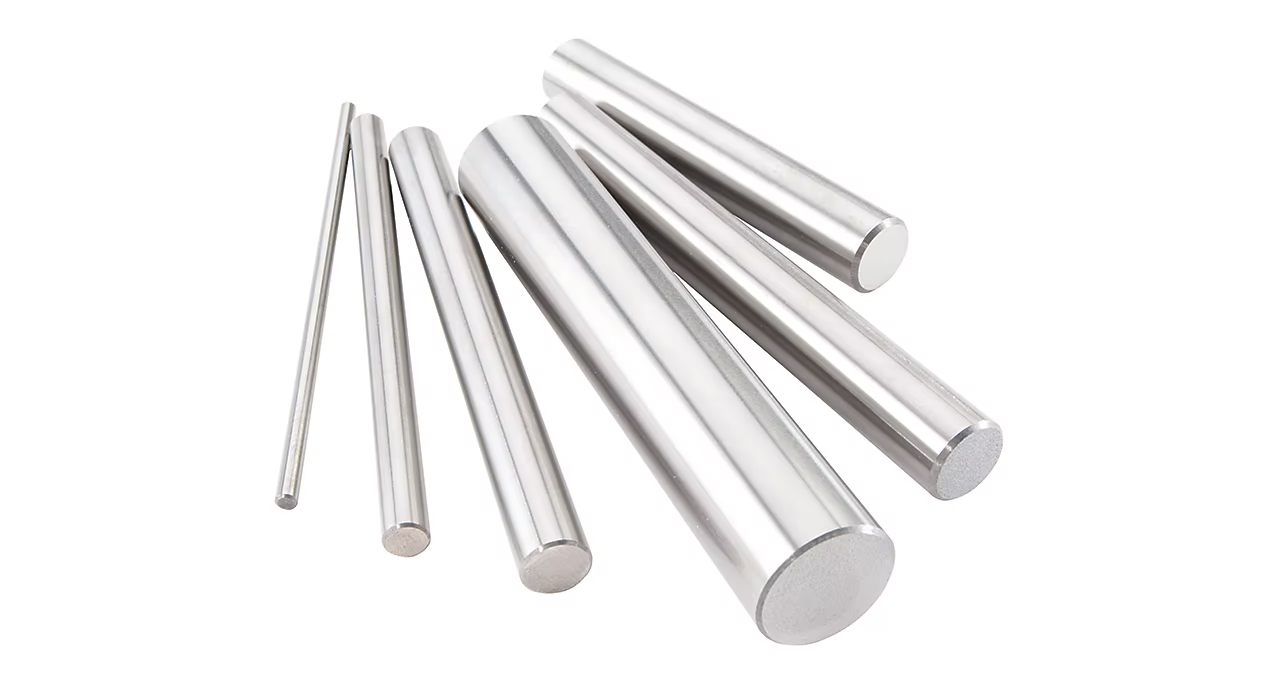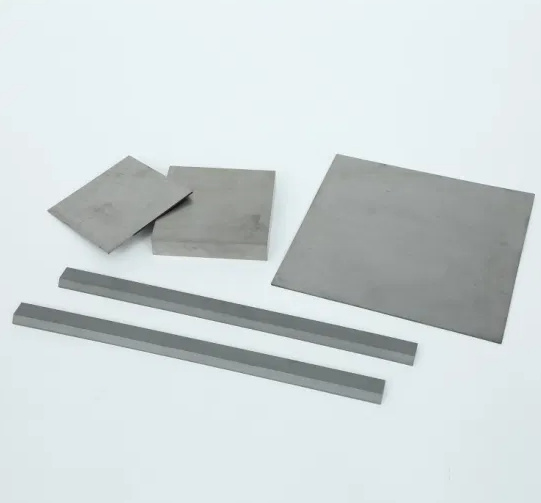Раскрытие эффективности: Концевые фрезы с двумя фланцами для превосходного съема материала и чистоты поверхности
Две флейты концевые фрезы являются важнейшими инструментами в мире механической обработки, которые ценятся за способность быстро удалять материал и создавать гладкую поверхность. Эти универсальные режущие инструменты выпускаются в различных конфигурациях, каждая из которых предназначена для решения конкретных задач обработки. В этом подробном руководстве рассматриваются два основных типа концевых фрез с двумя фланцами: концевые фрезы с прямым хвостовиком и шаровые концевые фрезы с прямым хвостовиком. Мы рассмотрим их уникальные характеристики, области применения, преимущества и то, как выбрать подходящий инструмент для ваших потребностей в обработке.
Понимание силы двух: зачем нужны торцевые фрезы с двумя флейтами?
Концевые фрезы с двумя флейтами Отличаются двумя режущими кромками, что дает им неоспоримые преимущества:
- Эффективная эвакуация чипов: Более широкие промежутки между режущими кромками способствуют эффективному удалению стружки, что особенно важно при работе с более мягкими материалами, такими как алюминий или пластик, которые склонны к образованию длинной, нитевидной стружки. Такой эффективный отвод стружки предотвращает ее повторное скалывание, улучшает качество обработки поверхности и продлевает срок службы инструмента.
- Увеличение скорости резания и подачи: Уменьшение контакта режущей кромки позволяет увеличить скорость резания и подачу по сравнению с концевыми фрезами с большим количеством режущих кромок. Это позволяет сократить время обработки и повысить производительность.
- Снижение силы резания: Благодаря меньшему количеству режущих кромок, входящих в материал, концевые фрезы с двумя флейтами создают меньшую силу резания, что делает их пригодными для обработки тонких или более хрупких заготовок, где чрезмерное усилие может привести к деформации или поломке.
Два типа, разные области применения: Квадратные и шаровые концевые фрезы
Концевые фрезы с прямым хвостовиком: Мастера плоских поверхностей и острых углов
- Определяющая особенность: Отличается плоским дном с двумя острыми режущими кромками, идеально подходит для создания плоских поверхностей, плечиков, прорезей и карманов с острыми углами.
- Приложения: Широко используется при фрезерных работах, требующих точных 90-градусных углов, например:
- Создание ключевых путей: Обработка пазов на валу или втулке для установки шпонки, которая предотвращает вращение между двумя компонентами.
- Этапы обработки: Создание ступенчатых элементов на заготовке, часто используемых для создания различных уровней или платформ.
- Профилирование краев: Резка прямых кромок и профилей на внешней стороне заготовки с острыми углами.
- Фрезерование торцов: Создание плоской поверхности путем фрезерования по верху заготовки.
- Фрезерование с погружением: Вырезание прямо вниз в заготовке для создания глубокого паза или кармана.
Шарошечные концевые фрезы с прямым хвостовиком: Создание контуров и плавных переходов
- Определяющая особенность: Отличаются полусферическим режущим наконечником, позволяющим создавать контурные поверхности, галтели, радиусы и плавные переходы между различными элементами.
- Приложения: Отлично подходит для применения в областях, требующих гладких, плавных поверхностей, таких как:
- Изготовление пресс-форм: Создание сложных полостей, деталей и гладких поверхностей в пресс-формах, используемых для литья под давлением, выдувного формования и других процессов формования.
- Погружение в воду: Обработка полостей и деталей в штампах, используемых для штамповки, формовки и других операций по обработке металла.
- Контурная фрезеровка: Обработка сложных 3D-форм и контуров по заранее заданной траектории.
- Создание филе и радиусов: Обработка закругленных углов и кромок для уменьшения концентрации напряжений и повышения прочности детали.
- Отделка сложных поверхностей: Создает гладкую, эстетически привлекательную отделку на изогнутых или контурных поверхностях.


Разбор конструкции: Анатомия концевой фрезы с двумя фланцами
Ключевые компоненты и их функции:
- Режущие кромки: Две точно заточенные кромки, отвечающие за съем материала, расположены на периферии концевой фрезы. Их геометрия и острота напрямую влияют на производительность резания и качество обработки поверхности.
- Флейты: Спиральные канавки, проходящие вдоль корпуса концевой фрезы, обеспечивают отвод стружки во время обработки. Концевые фрезы с двумя флейтами имеют более широкое пространство между флейтами, что улучшает отвод стружки.
- Хвостовик: Цилиндрическая часть концевой фрезы, которая надежно удерживается в держателе инструмента фрезерного станка. Прямые хвостовики характерны для ручных фрезерных станков и некоторых станков с ЧПУ.
- Тело: Основная часть концевой фрезы, обычно изготовленная из твердого карбида, отличающегося твердостью, износостойкостью и способностью сохранять остроту режущих кромок.
- Общая длина (OAL): Общая длина концевой фрезы от вершины режущей кромки до конца хвостовика.
- Диаметр резки: Диаметр режущей части концевой фрезы, определяющий ширину реза.
От сырья до прецизионного инструмента: Процесс производства
Путешествие трансформации:
- Подготовка заготовок из твердого сплава: Процесс начинается с цилиндрической твердосплавной заготовки, которая обычно изготавливается методом порошковой металлургии. Размеры заготовки немного больше, чем размеры конечной концевой фрезы.
- Шлифовальные работы: Прецизионные шлифовальные станки, часто с использованием алмазных шлифовальных кругов, используются для придания твердосплавной заготовке требуемой геометрии концевой фрезы. Это включает в себя создание режущих кромок, канавок, хвостовика и общих размеров.
- Нанесение покрытия: Для увеличения срока службы, твердости и производительности инструмента на концевую фрезу могут наноситься различные покрытия, например TiN, TiCN или AlTiN, с помощью таких методов, как химическое осаждение из паровой фазы (CVD) или физическое осаждение из паровой фазы (PVD).
- Контроль качества и инспекция: На протяжении всего производственного процесса применяются строгие меры контроля качества, чтобы гарантировать соответствие концевых фрез строгим допускам на размеры, требованиям к чистоте поверхности и стандартам производительности.
Концевые фрезы с двумя фланцами в действии: Мир применения
От аэрокосмической до автомобильной промышленности и не только:
- Изготовление пресс-форм: Создание сложных полостей, деталей и гладких поверхностей в пресс-формах, используемых для литья под давлением, выдувного формования и других процессов формования. Шаровые концевые фрезы отлично подходят для создания контурных форм.
- Аэрокосмическая промышленность: Обработка легких, высокопрочных сплавов, таких как алюминий и титан, для аэрокосмических компонентов, часто требующая точности и гладкости обработки, которую обеспечивают шаровые концевые фрезы.
- Автомобиль: При производстве компонентов двигателя, трансмиссии и других автомобильных деталей, требующих точных допусков и гладкой отделки, часто используются как квадратные, так и шаровые концевые фрезы.
- Производство медицинского оборудования: Создание сложных медицинских имплантатов, хирургических инструментов и устройств, требующих высокой точности, гладких поверхностей и биосовместимости. Шаровые концевые фрезы часто предпочитают из-за их способности создавать сложные геометрические формы.
- Общая обработка и прототипирование: Используются в различных отраслях промышленности для создания прототипов, приспособлений, оснастки и других обработанных деталей, причем как квадратные, так и шаровые концевые фрезы находят применение в зависимости от требуемой геометрии.
TRUER: ваш надежный партнер в производстве концевых фрез премиум-класса с двумя фланцами
Непоколебимая приверженность качеству и производительности:
- Точное машиностроение: Концевые фрезы TRUER с двумя фланцами тщательно разработаны для обеспечения исключительной точности, повторяемости и длительного срока службы инструмента, что гарантирует точность резания и стабильную производительность.
- Твердый сплав премиум-класса: Мы используем только высококачественные твердые сплавы, тщательно отобранные по твердости, прочности и износостойкости, что гарантирует длительный срок службы инструмента и оптимальную производительность.
- Экспертиза по конкретным приложениям: Наша команда опытных инженеров предоставляет экспертные рекомендации, чтобы помочь вам сориентироваться в процессе выбора и точно определить идеальную двухфрезерную концевую фрезу для ваших конкретных требований к обработке.
- Возможности персонализации: Компания TRUER специализируется на разработке индивидуальных решений для удовлетворения даже самых сложных и специализированных потребностей. Это включает в себя разработку геометрии, покрытий и размеров в соответствии с вашими точными спецификациями.
TRUER против конкурентов: Сравнительный анализ поставщиков концевых фрез с двумя флейтами
Выбор правильного партнера для обработки:
| Поставщик | Расположение | Диапазон цен (за штуку, приблизительно) | Специальности |
|---|---|---|---|
| TRUER | Китай | $15 – $150+ | Бескомпромиссное качество, разработка с учетом специфики применения, конкурентоспособные цены, исключительная поддержка клиентов |
| Ниагарская фреза | США | $18 – $180+ | Широкий выбор высокопроизводительных концевых фрез, известных своими инновациями и качеством |
| Режущие инструменты Ingersoll | США | $16 – $160+ | Широкий ассортимент режущих инструментов, включая концевые фрезы, сверла и развертки, ориентирован на производительность и надежность |
| Kennametal | США | $20 – $200+ | Мировой лидер в области решений для металлообработки, предлагающий широкий ассортимент режущих инструментов и систем оснастки |
Примечание: Цены на концевые фрезы с двумя фланцами зависят от множества факторов, включая размер концевой фрезы, тип, материал, покрытие, количество заказанных фрез и многое другое. Для сравнения всегда рекомендуется запрашивать цены у нескольких поставщиков. Хотите купить концевые фрезы с двумя фланцами отличного качества по правильной цене? Нажмите здесь..
Взвешивая плюсы и минусы: преимущества и ограничения двухфланцевых концевых фрез
Принятие обоснованных решений по обработке: Сбалансированная перспектива
| Характеристика | Преимущества | Ограничения |
|---|---|---|
| Эффективная эвакуация чипов | - Более широкое расстояние между флейтами способствует отличному удалению стружки, особенно при работе с более мягкими материалами<br> - Уменьшение повторного скалывания стружки, что приводит к улучшению качества обработки поверхности и увеличению срока службы инструмента | - Не так эффективен при работе с более твердыми материалами, которые дают более мелкую стружку, где упаковка стружки может стать проблемой |
| Увеличение скорости резания и подачи | - Меньшее количество режущих кромок позволяет увеличить скорость резания и подачу, повышая производительность<br> - Сокращение времени резания может привести к снижению общих затрат на обработку | - Может привести к более грубой обработке поверхности по сравнению с концевыми фрезами с большим числом канавок, особенно при работе с более твердыми материалами |
| Снижение силы резания | - Подходит для обработки тонких или более хрупких заготовок, где чрезмерное усилие может привести к деформации или поломке<br> - Может уменьшить отклонение инструмента, повышая точность | - Не такие прочные, как концевые фрезы с большим числом канавок, что делает их менее пригодными для тяжелых операций черновой обработки |
Углубляясь: Интересные сведения о концевых фрезах с двумя фланцами
За пределами основ:
- Центральная резка по сравнению с бесцентровой резкой: Концевые фрезы с двумя флейтами могут быть центровыми и бесцентровыми. Концевые фрезы с центральным резанием имеют режущие кромки, которые простираются до центра инструмента, что позволяет им погружаться непосредственно в заготовку. Концевые фрезы для бесцентрового резания требуют предварительно просверленного отверстия или техники наращивания для начала резания.
- Угол спирали: Угол спирали фрез влияет на отвод стружки и режущее действие. Больший угол спирали способствует агрессивному удалению стружки, в то время как меньший угол спирали обеспечивает более гладкое резание, но менее эффективный отвод стружки.
- Выбег и баланс: Биение и баланс концевой фрезы имеют решающее значение для точности, качества обработки поверхности и срока службы инструмента. Под биением понимается любой эксцентриситет или шатание при вращении инструмента, а дисбаланс может вызвать вибрацию и преждевременный износ. Высококачественные концевые фрезы производятся с целью минимизации биения и обеспечения надлежащей балансировки.
Часто задаваемые вопросы: Ответы на ваши вопросы по торцевым фрезам с двумя флейтами
1. Каковы основные преимущества использования концевой фрезы с двумя флейтами по сравнению с концевой фрезой с большим количеством флейт?
Концевые фрезы с двумя фланцами обеспечивают эффективный отвод стружки, особенно при обработке мягких материалов, и позволяют увеличить скорость резания и подачу за счет уменьшения контакта режущих кромок. Это позволяет сократить время обработки и повысить производительность.
2. В каких случаях следует выбирать концевую фрезу с квадратным хвостовиком, а не шаровую?
Выбирайте концевую фрезу с прямым хвостовиком, если вам нужно создать плоские поверхности, заплечики, пазы или карманы с острыми углами в 90 градусов. Если требуется создать гладкие, контурные поверхности, галтели, радиусы или плавные переходы между элементами, выбирайте шаровую концевую фрезу.
3. Можно ли использовать концевую фрезу с двумя фланцами для черновой обработки?
Хотя концевые фрезы с двумя флейтами можно использовать для легкой черновой обработки, особенно в мягких материалах, они обычно лучше подходят для чистовых операций или легкого резания. Для тяжелых черновых работ рекомендуются концевые фрезы с большим количеством фрез и более прочной конструкцией.
4. Каковы общие признаки износа концевой фрезы с двумя фланцами и как продлить срок службы инструмента?
К общим признакам износа относятся увеличение силы резания, ухудшение качества поверхности, чрезмерное выделение тепла, а также сколы или поломки режущих кромок. Чтобы продлить срок службы инструмента, используйте соответствующие параметры резания, эффективно применяйте охлаждающую жидкость, поддерживайте жесткую настройку и избегайте чрезмерного отклонения инструмента.
5. Какое значение имеет покрытие на концевой фрезе с двумя фланцами?
Покрытия повышают срок службы, твердость и производительность инструмента. TiN - это универсальное покрытие общего назначения, TiCN обеспечивает повышенную твердость и износостойкость, а AlTiN отлично подходит для работы в условиях высоких температур. Выбирайте покрытие в зависимости от обрабатываемого материала и желаемого срока службы инструмента.



